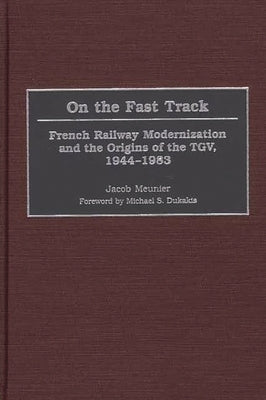Before you leave...
Take 20% off your first order
20% off
Enter the code below at checkout to get 20% off your first order
Discover summer reading lists for all ages & interests!
Find Your Next Read

For much of the postwar era, French society had a contradictory view of passenger trains, scorning them as quaint anachronisms on the one hand, yet also fearing their economic and social impact. All this changed with the introduction of the famed Train á Grande Vitesse (TGV) between Paris and Lyon in the early 1980s. In vivid detail, Meunier describes the political, economic, and social factors that both helped and hindered the development of the world's fastest, most technologically advanced train.
The present-day enthusiasm in France for high-speed rail travel dates only to the successful launch of the now-famous TGV in 1981. Until now, most published accounts of French high-speed rail have been of a technical nature and have ignored or minimized the historical, political, economic, and social context. Historians have been left with detailed descriptions of locomotives and experimental test runs, but there has been scant information cercerning why the machines were built and why the tests were carried out in the first place. This book is the first full-length treatment of high-speed rail travel and the bibliography is one of the most complete on the subject.Thanks for subscribing!
This email has been registered!
Take 20% off your first order
Enter the code below at checkout to get 20% off your first order